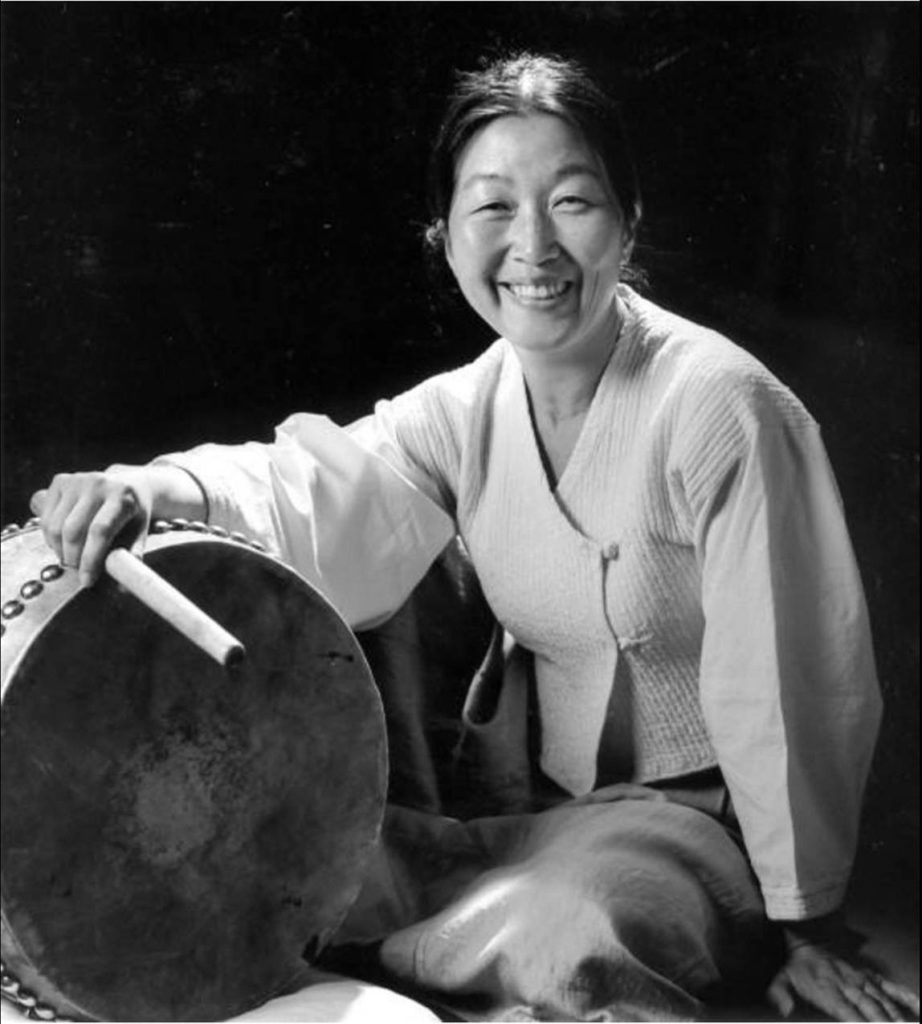by Jarrett Hoffman

One of the foremost advocates of that art form in North America is Chan E. Park, who will bring pansori to Standing Rock Cultural Arts’ Around the World Music Series at the North Water Street Gallery in Kent on Saturday, March 16 at 8:00 pm. (Pay what you wish, or give a suggested donation of $10. A 7:30 pm reception will include free sujeonggwa, a traditional Korean ginger-cinnamon-persimmon punch.)
Today, five madang (or song cycles) make up the pansori repertoire. In Kent, Park will give a bilingual performance of one of those five, the Sugungga (“Song of the Underwater Palace”). That English title sounds a bit imposing, but it’s actually a fairly light tale about a dragon king, his loyal turtle, and the rabbit they plan to trick — but who turns the tables on both of them in the end.
Park began studying pansori singing in Korea in the mid-1970s, learning from Ch’ông Kwônjin, Sông Uhyang, and Han Nongsôn — each of them recognized by the South Korean government as “Living National Treasures” or as heirs to that title. She teaches Korean language, literature, and performance studies at Ohio State, where she also directs the Lee Korean Performance Research Program and serves as producer and artistic director of the University’s Annual Korean Wind and Stream Performance Event.
I got in touch with her by email for a short Q&A.
Jarrett Hoffman: Of course, in the fashion of pansori, you’ll be singing, narrating, and playing all of the roles in the story. But the barrel drum part often goes to someone else — will you be handling that as well?
Chan E. Park: I will be accompanying myself. I started to do that since no drummer was available in this part of the world.
JH: To anyone who hasn’t heard it before, how would you describe what pansori sounds like vocally?
CEP: Pansori singing does not utilize falsetto, except for dramatic effects. The first-time listener might have to take a few minutes to get used to the voice.
JH: How would you describe the mood of the Sugungga?
CEP: It is an allegory of the way of the world — mostly humorous, with hardly a sad element.
JH: Jumping backwards, how did you become interested in studying pansori, and later devoting your career to it?
CEP: I had just graduated from college with a major in English literature and a lot of exposure to theater, especially American musicals that my department was producing for educational purposes. For cultural and historical reasons, traditional music — including pansori — was being looked down upon as something practiced by those unacceptable in respectful society. The Korean society I was in was all being geared up for modernization.
One day, an opportunity to learn pansori singing came my way. I took it, and here I am still learning and practicing. There are so many reasons I could list about why and how I continued. For this conversation, it is my deep respect and love for the amazing artistry my teachers left. I see it as the soul of Korea.
Published on ClevelandClassical.com March 11, 2019.
Click here for a printable copy of this article



